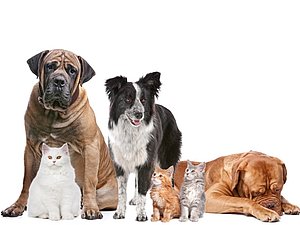Import of pet animals
Event description

Live animals from third countries can enter the EU only at certain points of entry where they are subject to veterinary checks in order to ensure their traceability and protection against transmission of diseases to people and animals. In Slovenia, such a point of entry for live animals from third countries is Airport Brnik, where competent officers of the Administration of the Republic of Slovenia for Food Safety, Veterinary and Plant Protection can carry out the necessary checks. Animals which do not pass these checks satisfactorily are not allowed to enter the customs territory of the Union.
Pet animals
Pursuant to Regulation (EU) No 576/2013 laying down uniform rules at the EU level regarding non-commercial movement of pet animals, the following animals are considered as pet animals: dogs, cats, ferrets, invertebrates (with the exception of bees and bumble bees, molluscs and crustaceans), ornamental aquatic animals, amphibian, reptiles, birds (with the exception of poultry) and mammals (rodents and rabbits other than those intended for food production) accompanying their owner or an authorised person during a non-commercial movement. The person responsible for them for the duration of such a movement is their owner or an authorized person. Member States have designated points of entry (points of entry), for the purpose of non-commercial movements of pet animals from third countries into the territory of the EU where pet animals can enter territory of individual Member States.
Non-commercial movements
Non-commercial movement means any movement which does not have as its aim either the sale or the transfer of ownership of a pet animal. Requirements laid down by veterinary regulations regarding non-commercial movements of pet animals differ according to the species of animals, their age, country of origin or destination etc. Manners of identification of pet animals, accompanying documents and medical requirements (vaccination) are also set out. The maximum number of pet animals which can enter the territory of the EU in the course of one non-commercial movement is five. In special situations (participation at competitions, exhibitions etc.), this number may exceed five, as long as the necessary requirements are met.
The strictest veterinary requirements regarding the movement of pet animals from third countries apply to animals which are susceptible to rabies (dogs, cats and ferrets) and avian influenza (birds). The Administration of the Republic of Slovenia for Food Safety, Veterinary and Plant Protection and customs authorities perform checks within the sphere of their competence in order to establish whether requirements for non-commercial movements of pet animals are met. Owners of pet animals must present the accompanying documents to the customs authority at the point of entry and enable possible checks.

Did you know?
The introduction of certain animal species, their parts and products thereof can be limited also for other reasons such as risk of extinction, risk of invasive alien species etc.




